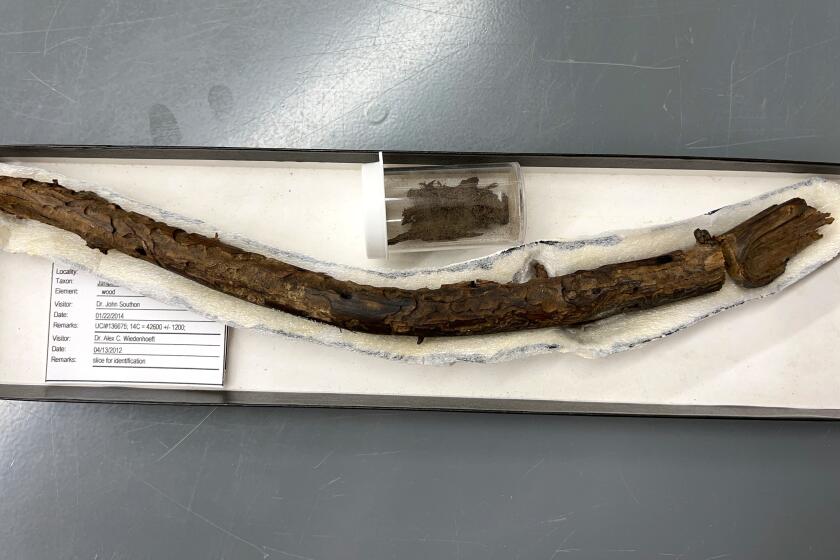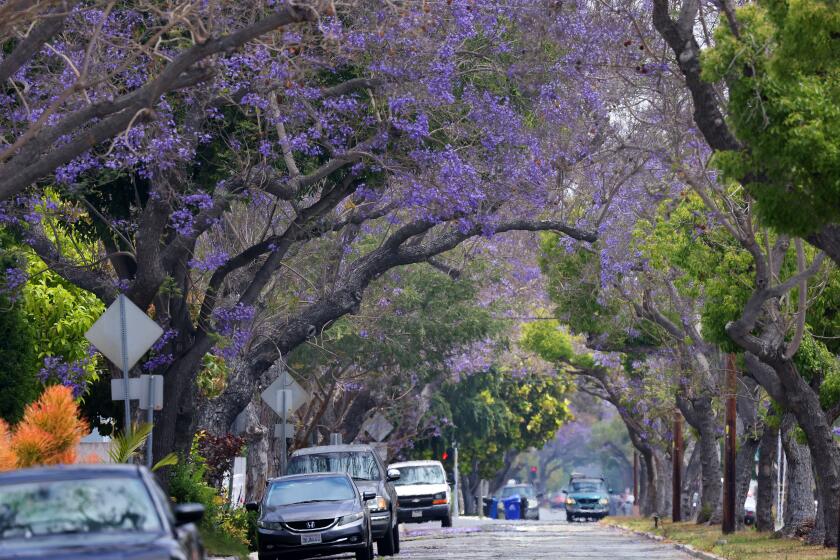Volunteers Clearing the Air on Indoor Home Pollution : ENVIRONMENT
A friend of mine’s mother--I’ll call her Jane--sold her house recently to get away from the headache of home repairs. She moved into a nice rental apartment in a convenient neighborhood. Two weeks later, she had a headache of a different color.
Something in her new home was making her sick. Actually, she didn’t have a headache in the literal sense. What she did have were red, itchy eyes, a running nose, a chest cough, an itchy scalp and a rash around her neck--all classic symptoms of what has come to be known as sick-building syndrome or environmental illness.
Jane doesn’t suffer alone. An estimated 30 million people in the United States are made ill by indoor air pollution and dust every year.
Their problems are often caused by volatile chemicals that outgas from building materials, finishes, carpets and cleaning products. They are furthered by a decrease in time spent in housekeeping that allows more house dust to build up inside. And they are greatly exacerbated by a new energy consciousness that encourages people to seal up their houses without providing appropriate ventilation.
The Environmental Protection Agency ranks indoor air pollution as one of the most urgent environmental problems we face. Unfortunately, it’s also one of the most ignored.
Enter the Master Home Environmentalist Program in Seattle, a pilot program that may soon take root elsewhere. The program trains volunteers in the basics of how to identify indoor air problems and maintain a healthy home, communications skills, cultural sensitivity and just-plain-old sensitivity. It is patterned after the now-nationwide Master Gardener program, which gives expert training to gardeners.
The home environmentalist training takes about 40 hours (one night a week for 11 weeks and two Saturday classes). Volunteers make a commitment to work at least that many hours again, to help others. And the course is free.
*
Essentially, the volunteers help people like Jane. They make free house calls, performing a house-health check called the Home Environmental Assessment List. They give presentations to groups. They accompany prospective home buyers and renters to help evaluate a place’s healthiness.
And they dream up ways to reach people of different income levels, ethnic groups and living situations with the message that homes can be made healthier places to live.
The project was dreamed up by Home Toxics Consultant John Roberts and other members of a Seattle group called the Home Toxics Task Force. (The task force is made up of the League of Women Voters, the Washington Toxics Coalition, Sierra Club and the Washington Environmental Council.) It is funded by a pretty forward-thinking group of bureaucracies, including EPA and the state Department of Ecology.
The Master Home Environmentalist Program is still in its infancy, having trained 40 volunteers in two groups, but it has ambitious expansion goals.
One group of volunteers is organizing a program to visit home day-care centers, giving workshops for parents. Another group is investigating tenants’ legal rights, in order to help tenants and landlords sort out whose responsibilities are whose.
Meanwhile, the program is fielding requests for information from others around the country interested in setting up similar programs.
Additional information on Seattle’s Master Home Environmentalist Program is available from Lucy Gaskill-Gaddis, Home Toxics Task Force Coordinator, at (206) 938-3040, or John Roberts, at (206) 322-0616.
More to Read
Start your day right
Sign up for Essential California for news, features and recommendations from the L.A. Times and beyond in your inbox six days a week.
You may occasionally receive promotional content from the Los Angeles Times.






